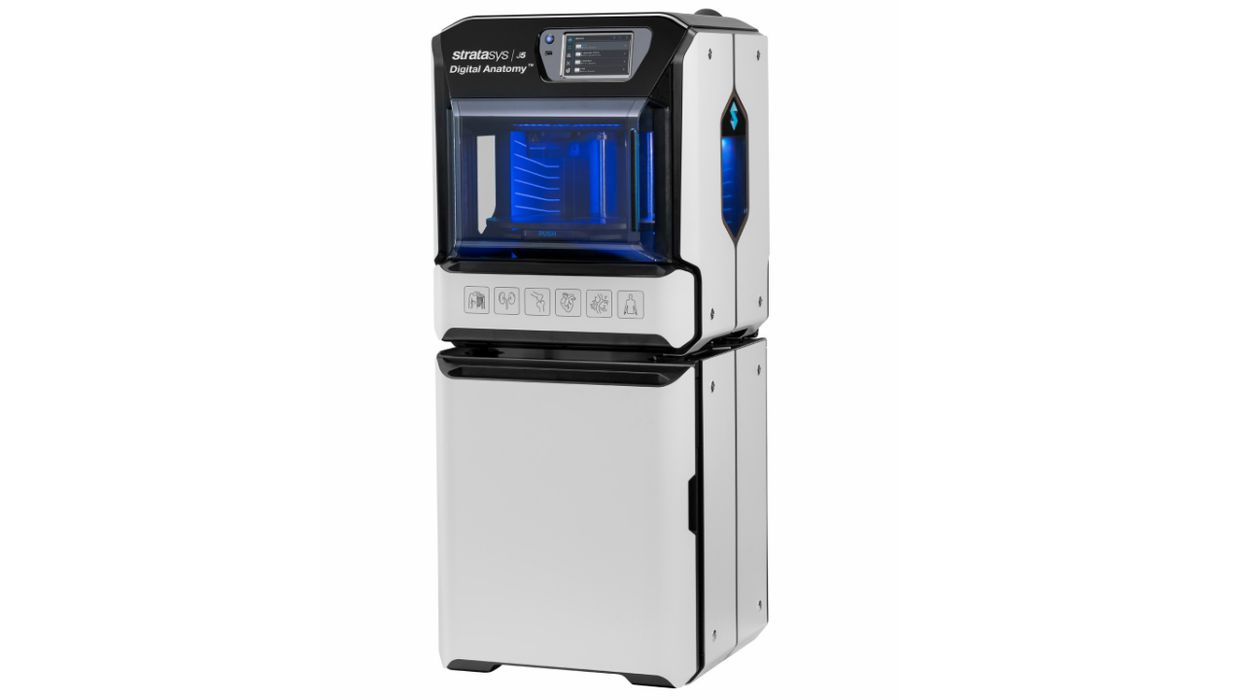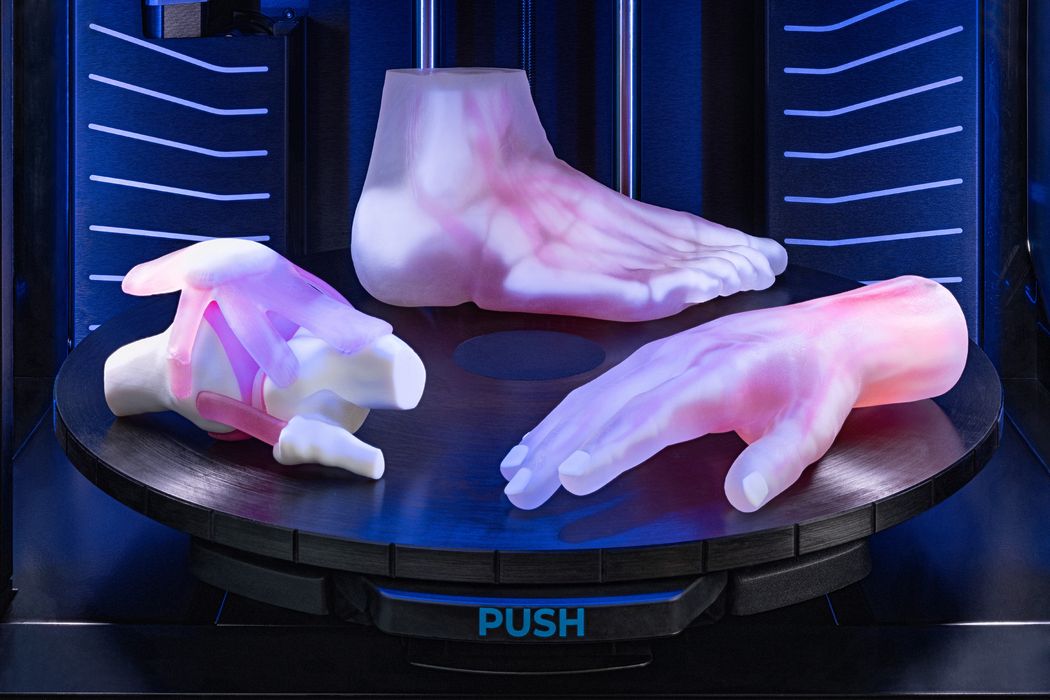
Stratasys’ efforts in the anatomical 3D printing space just warmed up with a brand new dedicated 3D printer.
The new J5 Digital Anatomy 3D printer leverages the company’s multimaterial PolyJet technology in a way specialized for anatomical 3D prints.
What’s the big deal with anatomical 3D prints? They are increasingly used in two ways. First, surgeons to simulate complex surgical procedures, and secondly they are used for educational purposes.
The former process begins with 3D scans of patients, which can then be transformed into the complex multilateral 3D models for printing. For surgical procedures, anatomical prints present a near-identical physical representation of the patient scenario. Surgeons can practice difficult procedures to increase the chance of success, or develop alternative surgical approaches.
Students can similarly use anatomical models to also practice procedures, but also learn about selected portions of the human anatomy.
Stratasys first got into the anatomical model business quite a few years ago, when it was realized that the multimaterial PolyJet machines could be used for this purpose. However, at the time there were still some software and material limitations.
Since then the company began offering an anatomical model print service, opening up the possibility of obtaining models to many more participants.
This week Stratasys took another step by introducing a 3D printer that is specifically designed for anatomical 3D printing. It inherits much of the hardware, materials and software technology of prior efforts, but puts it all in a single accessible and compact package that can easily fit within medical facilities.

Stratasys’ anatomical capabilities have increased substantially since their initial work in this area. They explain the J5’s realism features:
“Supports the production of models that mimic the behavior and response of real human tissue, skeletal structures and vasculature, providing realistic haptic feedback for procedures such as suturing, incision, and screw insertion, while bearing true-to-life radiopacity characteristics with supported imaging.”
You can see how this system would be highly desirable by surgeons: the resulting anatomical models will be extraordinarily accurate, both in visual appearance and texture.
Stratasys said the J5 also provides for a lower total cost of ownership, but it’s not clear how that’s achieved. It may be that the cost of the machine itself is lower than alternatives, but it’s likely the material cost remains the same as these materials span the PolyJet equipment.
Finally, I’m curious about the few specific-purpose 3D printers I’ve seen recently. This device is for anatomical prints, while others have been for footwear midsoles, for example. I’m wondering if this could become a trend: build dedicated 3D printers for specific applications.
Via Stratasys
